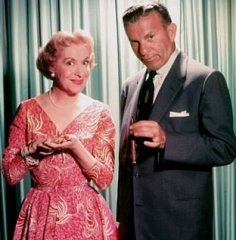How's that for a potpourri of things to commemorate on Friday, July 19?
Most of the Usual Suspects call Friday
Daiquiri Day, to commemorate the cocktail,
invented in 1898 in the small mining town of Daiquiri, near Santiago, Cuba. Ernest Hemingway is credited with helping to popularize the drink in the United States (or, according to Usual Suspect
Punchbowl.com, inspiring "the creation of the frozen variety at El Floridita in Havana in the 1940s").
Some of the Usual Suspects also identify July 19 as
Raspberry Cake Day. Ernest Hemingway seems to have had nothing to do with this one.
July 19 is also the anniversary of the day on which the City of Rome caught fire, in A.D. 64.
We may acquit the Emperor Nero of the charge of fiddling while Rome burned -- mainly because the fiddle had not yet been invented.
While some sources say Nero was out of town when the fire happened, and that he rushed home to launch a personal public relief campaign, the Roman historian
Dio Cassius not only accused Nero of having the fire set,
he also claimed that, "While the whole population was in this state of mind and many, crazed by the disaster, were leaping into the very flames, Nero ascended to the roof of the palace, from which there was the best general view of the greater part of the conflagration, and assuming the lyre-player's garb, he sang the 'Capture of Troy,' as he styled the song himself, though to the enemies of the spectators it was the Capture of Rome." Of course, Dio Cassius lived from A.D. 150-235 -- well after the fall of Nero and his Julio-Claudian dynasty.
What happened after the Great Fire is not disputed. The Great Fire provided an excuse for the first major persecution of Christians at Rome. In addition all other sorts of public executions, since Nero wanted the Christians blamed for the fire, some unlucky Christians were burned as torches. (It is in this persecution that
Sts. Peter and Paul were martyred.)
Also undisputed is that a large tract of land was set aside from the burned out areas for use by Nero himself. Among other things, he built himself a truly gigantic, luxurious palace,
the Domus Aurea.
This was a bad move from every conceivable public relations standpoint -- and as soon as Nero was eliminated, the Domus Aurea began to be eliminated, too, the area being rededicated to public uses including the Flavian Amphitheater (you know it as the Coliseum) and the Baths of Trajan.
July 19 may also be called
Triple Play Day. It was on July 19, 1909 that the first unassisted triple play in major league history took place: Neal Ball, the shortstop for what were then called the Cleveland Naps, caught a line drive, touched second (doubling off the runner who'd left before seeing if the ball would get through) and tagged the runner coming in from first. (The opposing manager presumably had called a hit and run on the play.)
Anyway, Ball's feat is noted on the
Baseball Hall of Fame website. And, according to
MLB.com there have only been 14 other unassisted triple plays in major league history -- making it the rarest feat in baseball, rarer even than a perfect game (there have been
23 of those).
You can see video on some of the more recent triple plays on the MLB.com site. Not to be outdone, however, Wikipedia
has explained how each of the 15 major league triple plays happened. Not surprisingly, the player who made the play was, in each case, a shortstop or second baseman.
But -- get this -- on July 19, 1911 an unassisted triple play was made in a Pacific Coast League game
by a center fielder. According to the linked page on the Baseball Hall of Fame site, Walter Carlisle, playing for Vernon of the PCL, caught a fly ball at his shoe tops. Noticing that the runners at first and second had broken on the play, anticipating that the ball would fall safely in, "Carlisle ran to second to force one, and proceeded to first base, stepped on the bag, and finished the rare triple play."
How about that?
And there have been only two players in major league history to start a playoff game as a pitcher and hit a home run in another playoff game as a position player. You can probably guess that Babe Ruth was one (pitching the Red Sox in the 1918 World Series before being traded to the Yankees).
Can you guess the other? It was
Rick Ankiel; he was born July 19, 1979, which means he'll turn 34 on Friday. In 2000, Ankiel finished second to Rafael Furcal in Rookie of the Year voting, winning the
Sporting News Rookie of the Year Award. Tony La Russa gave Ankiel the ball in Game One of the NLDS against the Braves -- but things went badly for the young star. Things went so badly that Ankiel lost his confidence and his control and eventually went back to the minors to reinvent himself as an outfielder, eventually getting back to the majors with the St. Louis Cardinals. He left the Cardinals for the Royals as a free agent a couple of years later, and then the Royals traded him to the Braves -- and it was with the Braves, in 2010, that he hit a post-season home run for the Braves, against the San Francisco Giants.























